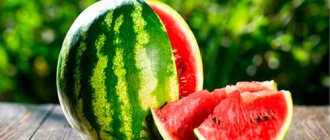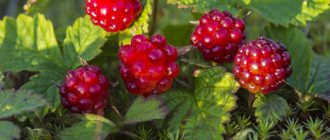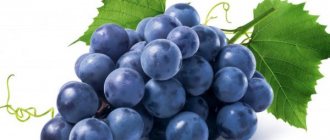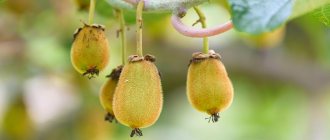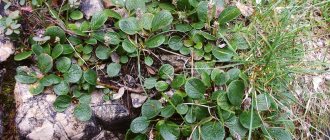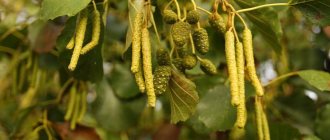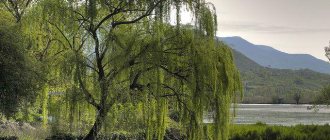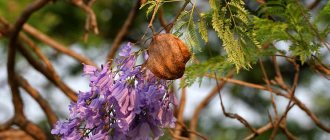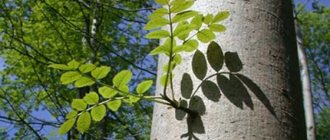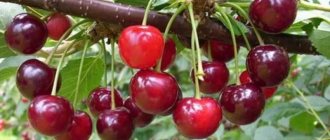Among the large number of different plants growing in gardens and parks, one of the most famous is the cherry. A tree familiar to many since childhood and growing on the territories of three continents.
Cherry is a tree or shrub, the height of its branches can be from 2 to 7 meters. The flowers are painted white or pink and are collected in half-umbrellas or 1-2 in a bunch. The spherical cherry fruit in the ripe stage acquires various shades of red, from light to brown-dark. The fruits are juicy drupes, edible, and have a mainly sweet and sour taste. The green leaves have an oblong-oval shape. When blooming, the flowers smell pleasantly.
Cherry is a tree or shrub that belongs to the Rosaceae family. This is a deciduous plant species, therefore it is used for decorative purposes only as a spring accent. Many varieties and hybrids have been bred, the height of which does not reach 1.5–2 meters, with beautiful flowers, sometimes velvety, and a pleasant aroma. Cherry, a tree or bush, grows quickly and, due to the density of flowering and decorativeness, is often used in landscape design of gardens. In nature it reproduces by root shoots and seeds. In a cultivated form, it can only be propagated by grafting.
Common cherry
This is a cultivated species of cherry, a tall tree with a wide crown and spreading branches. Its bark is shiny dark. The leaves are oblong-oval, pointed at the ends, dark green on top and slightly lighter on the underside. The flowers are located on long peduncles and can reach up to 2.5 cm in diameter. The petals of this type of cherry are white in color and have a pleasant fragrant smell. The flowering period lasts about 3 weeks. The fruit of the cherry is ordinary round in shape and has a sweet and sour taste. This species is widely distributed in Russia and some European countries. This is due to the fact that the common cherry is very unpretentious in care, frost-resistant, grows well in partial shade and tolerates dry summers well. It has many hybrids, which are often used for decorative purposes.
Growing
Cherry is a very popular plant among gardeners in Europe. Despite its unpretentiousness, the plant requires proper planting and care. Most varieties are self-sterile, so pollinator trees need to be planted on the site. Read about how to plant cherries correctly.
Climatic features
Cherry, unlike other fruit trees, does not have high winter hardiness, so it practically does not grow in the northern regions. Temperatures from -100C are considered dangerous for the root system of cherries, and flower buds and ovaries can die even at -10C, which is not uncommon during light spring frosts.
Cherry is not too demanding of sunlight and can develop normally in the shade, but it is best to plant it in elevated areas where there is both sun and slight shade.
Varietal hybrids for the Urals and Siberia
The low frost resistance of the plant is not an obstacle to its cultivation in the regions of the Urals and Siberia, since there are hybrids that are adapted to cold winters, short summers and frosts during transition periods. The following early-ripening varieties with high yields are suitable for these regions:
- Zagrebinskaya;
- Gridnevskaya;
- Ural standard;
- lighthouse;
- Michurina's vole.
A complete list of cherry varieties for the Urals is presented here.
These hybrids are distinguished by good resistance to prolonged frosts and spring frosts, regular fruiting and high yield.
The soil
Loamy and sandy loam soils with a neutral pH (pH 7) are best suited for cherries. The plant should not be planted on sandy, peaty or acidic soils. If there is no choice, you can use acidic soils, but with mandatory neutralization with chalk, lime or dolomite flour. It is also important to know what can be planted next to the cherry tree.
Humidity
Low-lying and too wet areas are not suitable for cherries, as they will suffer from fungal diseases. Cherry does not like high humidity and tolerates drought well. The groundwater level should not exceed 180-200 cm. The higher the groundwater level, the greater the chance that the plant’s roots will freeze.
Selection of seedlings for planting
Seedlings must be purchased from a special nursery, where the plants are not resold, but grown. You should not choose tall seedlings with a large number of shoots. They have a developed root system and do not take root well. You need to buy annual seedlings with the number of shoots from 3 to 6 and their length from 10 to 20 cm.
There should be no growths, mechanical damage or rot on the trunk and roots of the cherry seedling.
Steppe cherry
Steppe cherry tolerates frosty winters well; therefore, it can most often be found in the north of Russia and in mountainous areas. This type of cherry is a low-growing tree or bush that branches heavily and creates a large crown. On erect branches there are small, dark green, shiny leaves. Their shape is oblong-oval, pointed at the end. The roots grow 3 meters from the tree and are located shallow in the ground. The flowers of this type of cherry are small and collected 2–5 pieces in a bunch on the branches, painted white. The fruits are small, juicy, sour in taste, and can be red, pink or burgundy. The period of full ripening is approaching the end of summer or beginning of autumn.
The best varieties
A good variety should have high yields, resistance to drought and frost, diseases, and different taste. Below is a rating of the best cherry varieties of different ripening periods.
Early ripening varieties:
- Shokoladnitsa is a low-growing tree with sweet and sour berries of a dark, almost black color, resistant to frost, drought and disease;
- Shpanka is a hybrid of sweet cherry and sour cherry (duke), whose fruits are dark burgundy in color, sweet and sour, the variety is partially self-pollinating, resistant to coccomycosis;
- In memory of Enikiev - a self-fertile variety with oval or heart-shaped berries that have a pleasant dessert taste;
- Miracle cherry - duke with sweet fruits of very large size (up to 10 g), bears fruit from the 3rd year;
- Assol is a bush-like variety with medium-sized dark red berries, a dessert taste with sourness, and partial self-fertility.
Mid-season varieties:
- Volochaevka - a tree up to 3.5 m high, dark red berries of medium size, sweet and juicy, self-fertile variety, resistant to disease;
- Vladimirskaya is an old variety, has the shape of a weeping bush, is characterized by high yield (up to 25 kg), the berries are dark red, sweet and sour, universal in use, fruiting occurs in the 3rd year.
- Zhukovskaya is a medium-sized tree, the crown looks like a ball, medium-sized dark red heart-shaped berries, the pulp is juicy, sweet and sour;
- Kharitonovskaya - a tree-like variety with partial self-fertility, bright red berries with orange, sweet and sour pulp;
- Molodezhnaya is a bush-like self-fertile variety, burgundy-colored berries, large (up to 6.5 g), juicy, sweet and sour, universal use.
Late ripening varieties:
- Lyubskaya - bush up to 2.5 m, self-fertile, highly productive (26–60 kg), red, juicy, sour berries, technical use, poor frost resistance, bears fruit from the 3rd year;
- Generous - bush-like form, very productive, medium-sized berries with excellent taste and commercial quality, do not crack, resistant to frost, but sick;
- Malinovka is a tree-like variety, high-yielding; small berries with sweet and sour pulp grow on the tree;
- Tamaris is a low-growing tree with partial self-fertility, medium-sized berries, bright red in color, sweet and sour, universal use.
The varieties described above are zoned in the middle zone, but are successfully grown in other regions.
Felt cherry
Felt cherry is a tree or shrub that has a large spreading crown with a small height, approximately 1–3 meters. The homeland of this species is China, so the second name is Chinese cherry. It can be used both for decorative purposes and as a fruit tree. The flowers are densely and beautifully arranged on the branches. Its advantage is its early flowering, which is how it decorates gardens that still have bare branches. The leaves are small, oval-shaped, with jagged edges. They are pubescent on the underside, which creates a velvety effect on the entire tree. The branches are thick with rough bark and have a gray-brown tint. The flowers are small, pinkish-white in color. Felt cherry, a tree or shrub, tolerates not only winter frosts, but also spring colds. The cherry fruit is small in size, from red to almost black, sweet, juicy. The seed is small and does not separate from the berry. After ripening, felt cherry fruits can remain on the branches for a long time without losing their properties.
Cherry fruit
The cherry fruit is used to make jam, compotes, and is added to confectionery products. The fruits are rich in glucose, fructose, nitrogenous, ash and tannins, pectins, microelements, organic acids, vitamins A, C, B and PP. Due to their beneficial properties, they have found use in folk medicine. Quench thirst, improve digestion, and are a mild laxative. They are a natural antipyretic and do not cause side effects. They have an expectorant effect. Pectins cleanse the body of toxins and heavy metals.
When making jam, the seeds should be removed from the berries, since they contain amygdalin, a toxic substance that breaks down in the body.
Sakura, or Japanese cherry tree
Japanese cherry, or sakura, is more of an ornamental tree than a fruit-bearing one. Its homeland is Japan, where various varieties of cherries grow in all regions. Every year, locals celebrate the arrival of spring with the beginning of cherry blossoms. The tree grows up to 4 meters in height, its crown is spreading, umbrella-shaped, and can also reach 4 meters in width. The branches are long and cascading. The leaves are narrow, ovate-shaped, and pointed at the ends. In summer they are bright green, and by autumn they turn yellow. The flowers are small pink, each of them is located on a petiole. Flowering period is mid to late spring.
Cherries in cooking
They love to use cherries in cooking. Cherry dumplings are considered one of the most famous dishes made from it. You can make jam, confiture, and jam from cherries. It is used for filling cakes and pies.
Compotes, jelly, liqueurs and liqueurs prepared using cherries have a unique taste and aroma. An interesting property is that its leaves are added to cucumbers during preservation to give them the ability to crunch.
But berries and cherry products are not good for everyone. It is better to avoid using it for those who suffer from allergies or stomach diseases with high acidity.
Due to the presence of a large amount of glucose in its composition, it is not useful for patients with diabetes. It is not recommended to consume them on an empty stomach and eat a single serving larger than a glass.
You need to be especially careful with the seeds. They should not be swallowed, as they contain hydrocyanic acid, which can cause poisoning.
Compotes and jam are made from pitted cherries, but they can only be stored and eaten for a year. You can preserve this healthy berry frozen using the quick freezing method, which preserves the taste and unique aroma of the berry.
Cherries are not only a tasty and valuable dietary product, but also a fruit that prolongs our youth. Therefore, it should be in the diet of every person.
By eating it, you can not only enjoy its pleasant and delicate taste, but also replenish your body with essential healthy vitamins and prolong your life.
Sources
- https://yagodydom.ru/frukty/vishnya/vishnya-derevo-ili-kustarnik.html
- https://PoFerme.com/sad/derevya/vishni
- https://tsvetydoma.ru/sad/plodovyie-derevya-i-kustarniki/vishnevoe-derevo-ili-kustarnik.html
- https://zelenyjmir.ru/vishnya/
- https://fermercar.ru/vishnya/vishnya-derevo-ili-kustarnik-botanicheskoe-opisanie-i-harakteristika-k-kakomu-vidu-otnositsya-foto
- https://dachadesign.ru/derevo-vishnya/
[collapse]
sand cherry
Sand cherry is native to North America. Just like Japanese, it is used to decorate gardens and parks. Sand cherry is a shrub whose height reaches only 1.5 meters. Its crown is wide, its branches are spreading, thick, and reddish in color. The leaves are oval-shaped, oblong and pointed at the end. In summer they are dark green in color, and by autumn they turn bright red, which gives the cherry bush a special charm. The flowers are small, up to 1.5 cm in diameter, bloom in late spring. The petals are white, and the fruits are dark, almost black.
Botanical description and characteristics
Find out also
How to distinguish cherries from sweet cherries? The cherry plant belongs to the Dicotyledonous class, Rosaceae order, Rosaceae family, Plum genus, Cherry subgenus.
Of all the species, the most common are Sweet Cherry and Common Cherry. A more ancient crop is the cherry.
This article is dedicated to the common cherry, which is cultivated in industrial and private gardens.
It does not occur in nature. The tree can reach a height of 5 meters and bear fruit from 2 or 3 years.
Root system
The cherry tree forms a tap-type root system, which consists of horizontal and vertical roots that make up the skeleton of the rhizome, as well as smaller shoots. The underground part of the plant is very powerful: vertical rods reach a depth of 1.5–2.5 m, and the diameter of horizontal roots is 1.5 times greater than the diameter of the crown.
Horizontal branches from the root collar begin at a depth of 10–30 cm. Therefore, the soil in the root circle must be cultivated very carefully so as not to injure the rhizome.
Sheet type
Leaf characteristics:
- grow alternately on petioles;
- the shape of a wide, elongated and pointed ellipse;
- the color is dark green on the front side and slightly lighter on the back;
- glossy surface;
- length - 5–8 cm.
Type of fruits and their varieties
Cherry berries are classified as drupes.
They are characterized by the following features:
- shape - round and oval;
- weight - 3–10 g;
- color - red, burgundy, dark red, black;
- the skin is thin and smooth;
- the pulp is very juicy;
- the stone is round, 0.5–1.5 cm in diameter;
- taste - sour, sweet and sour-sweet.
Flowering period
When the tree blooms, it is covered with lush white or pinkish flowers. Cherries bloom in spring, but the period depends on the area and variety: for early ripening it is the end of March, for mid-season - April, for late - May.
Ripening time
The duration of ripening also corresponds to the variety and weather in the area. In the south, you can taste juicy, refreshing berries at the end of May. And you can enjoy the fruits of late varieties in the central regions only in the last week of August.
Beneficial properties of fruits
Cherries can rightfully be considered a “home pharmacy” for their rich content of nutrients.
It contains the following:
- vitamins: A, E, C, P and group B;
- macroelements: potassium, calcium, phosphorus, magnesium and sodium;
- microelements: iron, zinc, copper, manganese, fluorine, molybdenum, iodine, cobalt.
Important! You should not eat berries with seeds - the latter contain the toxic substance amygdalin.
- Such a rich set of chemical elements gives all the components of the cherry (berries, leaves and wood) the following properties:
- bactericidal effect;
- improves blood condition: reduces clotting time, increases hemoglobin;
- positive effect on the cardiovascular system: lowers blood pressure, strengthens blood vessels, reduces the risk of heart attacks;
- normalization of the functioning of the digestive tract: improved appetite, mild laxative effect in the presence of constipation;
- cancer prevention;
- expectorant and antipyretic effect.
Not only the berries, but also the stalks, leaves and wood have medicinal properties . They are used to prepare decoctions and infusions. Cherries are contraindicated for those who suffer from diabetes, stomach ulcers and gastritis, as well as for allergy sufferers.
Bush cherry pruning
Bush cherry branches tend to grow wildly, so they need to be pruned annually. This is done with skill, since cherries react worse than other trees and bushes to pruning. This process is carried out the next year after planting. The period must be chosen when the bush is still in winter sleep. This could be the end of February or the beginning of March.
When pruning, it is recommended to leave a standard 30–50 cm from the ground. In the first year, pruning leaves 5–7 strong branches, which are located at a distance from each other and directed in different directions. In the second year of pruning, all branches that are directed to the center of the bush are cut out. During the spring-summer period, green shoots will appear on the trunk, which must be cut off immediately. If the bush is neglected, then such shoots are removed during spring pruning of the bush.
During annual pruning, a bush is formed and branches that grow inward are removed so that the bush is not very dense. Dried and dead shoots are also removed, and young ones are left instead for replacement. Bush cherries often develop root shoots that should be removed by pruning just below ground level. If this is done higher, then a new bush will form from such shoots, and the shoots will begin to branch.
Features of caring for cherries
Caring for a cherry planting is a simple matter, no more difficult than caring for other garden crops. Mandatory agrotechnical measures include watering, fertilizing, pruning, preventive treatment of the ground part and insulation for the winter.
Cherry processing
To prevent the development of diseases and insect damage, it is important to treat the trunk and branches with preventative agents.
Suitable for this:
- spraying with a urea solution (7%) before buds open to replenish nitrogen and kill pests under the tree bark;
- can be replaced with vitriol solution (3%) or Bordeaux mixture;
- colloidal sulfur helps in the destruction of mites and powdery mildew, apply in the spring at a temperature of at least +18°C;
- copper oxychloride - during berry growth;
- urea solution (4%) - in the fall after the leaves fall;
- lime solution - whitewashing the trunk and lower skeletal branches throughout the growing season, protects against sunburn, kills fungal spores and pest eggs.
We recommend that you familiarize yourself with the description and characteristics of self-fertile cherry varieties.
Watering
Cherry is drought-resistant and does not like waterlogging. The watering schedule depends on the age of the tree, the growing season and weather conditions. Young trees that have not yet bear fruit are watered frequently, once every 2 weeks, in the summer heat - more often (every week).
The soil should be wet to a depth of 45 cm. 1-2 buckets may be enough for this. There is no need to pour too much. Mature trees are watered less frequently, as needed. This also depends on the region and summer weather.
The tree especially needs moisture:
- after flowering and before fertilizing;
- when the fruits ripen;
- in the fall, after the leaves have fallen, thoroughly wet the soil to a depth of 80 cm to prepare for winter frosts.
Cherry feeding
On fertile and well-fertilized soil during planting, fertilizing will only be needed after 2 years. Poor soil should be fertilized starting next year after planting. Organic fertilizers (humus, compost) are applied at intervals of 3 years. You cannot fertilize the soil with nitrogen fertilizers before planting. They are introduced only after flowering. Fertilizer is produced along with watering.
Read more
Features and methods of feeding cherries
The cherry tree also needs:
- nitrogen fertilizers (urea, ammonium nitrate) to stimulate the growth of foliage and young shoots;
- phosphorus additives (superphosphate, phosphorus flour) to improve the quality and taste of fruits;
- potassium supplements (potassium salt) to strengthen the plant’s immunity and preserve it in its cells.
Fertilizing mode:
- in the spring after flowering ends - nitrogen fertilizers;
- in the summer heat (relevant for the southern regions) - potassium salt;
- In the fall, when digging - phosphorus and potassium additives along with organic matter.
Trimming
In order for a cherry tree to grow strong and bear fruit abundantly, it should be pruned regularly. Pruning is carried out for sanitary purposes, to form the crown and rejuvenate the entire plant. Sanitary pruning is carried out in spring, summer (if necessary) and autumn. It consists of removing dry, diseased, damaged branches and those that grow vertically and thicken the crown.
Formative pruning is carried out from the first year after planting. During the first 4–5 years, the tree actively grows and needs to form a crown. 9–10 skeletal branches are left (4–5 branches of the first tier and the same number of the second tier), and the side ones are cut off.
All shoots growing on the trunk below the lower skeletal branch are also removed. The central conductor is also shortened to slow down growth. Bushy varieties form a crown of 10–12 main shoots. Always carry out in early spring before the buds swell.
Anti-aging pruning is necessary for mature trees, which at the age of about 10 years have reduced productivity and many bare branches. All branches are shortened by half or a third. Semi-skeletal and skeletal branches are cut to the level of dormant buds. But this must be done more than once, so as not to seriously injure the plant. Trees also need to be rejuvenated in the spring.
Important! After pruning, all sections must be treated with garden varnish, oil paints or other antiseptic.
Wintering cherries
Preparing young and adult cherries for frost is identical. It includes autumn whitewashing of the trunk and lower branches with a solution of lime with the addition of copper sulfate. The roots need insulation. To do this, the tree trunk circle is covered with a thick layer of mulch, and in winter - with a layer of snow.
Mature trees no longer need any frost protection. Young trees may freeze in the first years, so the trunks and branches are wrapped in warm pine spruce branches or other available materials.
Diseases and pests
Even disease-resistant varieties are susceptible to fungal diseases and pest attacks if poorly cared for.
Diseases:
- Moniliosis . Fruit branches, leaves, flowers and fruits become covered with spots of rot and dry out. Treated by spraying with 3-4% Bordeaux mixture. Prevention includes thinning pruning, removing fallen leaves, destroying affected branches and treating with Bordeaux mixture.
- Coccomycosis . The berries and leaves become covered with small reddish spots. Treatment is spraying with 1% Bordeaux mixture, prevention is burning fallen leaves.
- Smoke spot . Ulcers on branches, appearance of gum, spoilage of berry pulp. Affected shoots are pruned in the fall before the leaves fall, and the trees are sprayed with 1% copper sulfate.
- Red spot . The leaves become covered with yellow and red-yellow spots and fall off. For prevention, fallen leaves are collected and burned, and the tree is sprayed with Bordeaux mixture.
- Powdery mildew . Small white cobwebs cover leaves with petioles and flowers, from which berries are no longer formed. Diseased branches should be pruned, and the trees should be treated with 2% colloidal sulfur 3 times at intervals of 2 weeks.
Pests:
- Cherry aphid . It sucks the juice out of the leaves, they dry out, turn black, and curl. Control methods are treatment with a soap solution (400 g per bucket of water), a solution of nitrophen (30 g per 1 liter of water) or karbofos (30 g per bucket of water).
- Cherry weevil . A yellow-green beetle that feeds on buds, flowers, and the pulp of berries and leaves eggs inside the fruits. To destroy, spray with a solution of karbofos (30 g per bucket of water) immediately after the end of flowering, repeating after 10 days, and also set traps.
Tree pruning
Cherry pruning, like all trees, occurs during the dormant period. This is the end of winter or the beginning of spring. This process is tied to weather conditions in the cherry growing region. When pruning trees, dry, weak and diseased branches are removed, and the cut areas are processed. Large main branches can also be removed with a saw if disease is detected. This way you can save the entire tree by removing the bad branch.
Features of seasonal care
It is important to remember that measures for caring for cherry crops can be repeated throughout the growing season. But they may differ depending on the time of year.
Cherry care in spring
Spring is a crucial time for a gardener. The health and productivity of trees depends on his timely actions.
Spring cherry care includes:
- formative and sanitary pruning;
- fertilizing with nitrogen fertilizer;
- watering after flowering;
- weeding and loosening;
- preventive treatment of the ground part of trees.
Also learn about the features of planting and caring for large-fruited cherries.
Cherry care in summer
Summer care depends on the circumstances, region and weather conditions.
This includes:
- sanitary pruning;
- fertilizing with potassium fertilizer (in the southern regions);
- watering as needed;
- weeding and loosening.
Caring for cherries in autumn
The purpose of autumn care is to prepare the tree for winter.
What should be done:
- fertilizing with phosphorus-potassium fertilizer;
- provide abundant winter watering;
- sanitary pruning;
- preventive spraying;
- lime treatment of the trunk;
- insulate the tree trunk circle and the trunk with branches (in young plants) with mulch.
Video: Care and planting of cherries
Care
Cherry in the garden prefers to grow in a bright place where the sun warms up well. The soil must be fertile and well-permeable to moisture; stagnation of water has a bad effect on the life of the entire tree. Also, the soil must be neutral and fertile; in other types of soil, cherries grow and bear fruit much less well.
Already in the 2nd year of a tree’s life, it must be fed in the spring with mineral fertilizers. If the soil is empty, then humus must be added.
A cherry tree, bush or tree, tolerates drought well, so it should be watered moderately, and after the fruit begins to ripen, reduce watering or remove it.
All types of cherries that grow as trees must be covered with lime 50–70 cm from the ground every year in spring. This protects plants from pests and various infections.
Selecting a site for planting
The choice of a site for planting cherries must be taken with full responsibility. The correct location determines the amount of harvest and the overall growth and development of the tree. It is worth noting that cherries do not tolerate transplants well.
In one place, a cherry tree will grow without transplantation for 15-20 years.
The soil for seedlings is preferably sandy loam, slightly acidic, loamy and light. Any variety of cherry will bear fruit well in illuminated areas; a slope to the south or southwest is ideal.
The culture does not tolerate close groundwater; there must be a distance of at least 1.5 meters from the roots, otherwise the process of rotting will begin. If the entire garden plot is located in a lowland with groundwater, then you can make a small mound 0.8-1.5 meters high or a mound of the same size and plant a seedling there.
Cherry loves being next to fences and buildings. In these places, as a rule, there is a lot of snow in winter, which means that the tree will be reliably protected from frost.
Reproduction
Spring is the best period for planting cherry seedlings. But since the growing season for this type of plant begins very early, the purchase must be made in the fall, after the leaves have fallen, and the seedling must be buried on the site.
For planting, you need to dig a hole with a diameter of about 40 cm and a depth of about 50–60 cm. If necessary, it is expanded to such a size that the roots of the seedling are free in it and do not rest against the walls. Mix some of the soil with humus and nitrogen fertilizer and pour it into the bottom of the hole. The seedling is placed on top and sprinkled with earth, then filled with water. In this case, it is necessary to ensure that the young tree does not go deep and that the root collar remains 1–2 cm above the ground. It is also recommended to mulch the young seedling for additional moisture conservation.
Cherry varieties that grow as bushes must be planted at a distance of 2–2.5 meters from each other, so that the branches do not intertwine and interfere with others. Tree varieties that have a large spreading crown are planted at a distance of 3–3.5 meters. It is advisable to leave plenty of space for trees so that they do not shade each other.
Cherry propagation occurs using root suckers and cuttings, but such seedlings must be grafted to obtain the variety. Without this, a wild cherry tree will grow from the tree. But this rule applies only to previously grafted plants. Root shoots of varietal cherries produce excellent seedlings that make good fruit-bearing trees.
Difficulties in growing
Fruit trees are often affected by pests and fungal diseases. Cherry is no exception.
Cherry pests
The most dangerous for cherries are plum codling moth, bird cherry and cherry weevils, sawflies, subcortical leaf roller, hawthorn, and cherry aphids.
- The plum moth, being a caterpillar, damages fruits by feeding on kernels and pulp. It is necessary to treat the trees and the soil under them with one of the preparations: “Cytcor”, “Rovikurt”, “Anometrine”.
- Cherry and bird cherry weevils are small bugs that feed on cherry buds, ovaries, and leaves. The female lays eggs in the shell of the seed and can damage up to 200 fruits. For the fight, the drug “Actellik”, “Ambush” or “Rovikurt” is used. To get rid of the cherry weevil, the first treatment should be carried out immediately after flowering, and then after 10 days. Against bird cherry, the first treatment is carried out before flowering, and the second, if necessary, after the cherry blossoms.
- Sawflies eat leaves. To get rid of them, immediately after flowering, cherries are treated with Actellica or Karbofos solution.
The pests made holes in the cherry leaves.
- In June, the subcortical leaf roller lays eggs in cracks in the bark, and the hatched caterpillars gnaw tunnels in it. To destroy the pest, use a 50% Actellik solution or 10% Karbofos solution. The tree should be treated during butterfly summer.
- In the fight against hawthorn, whose caterpillars damage the leaves, use “Aktellik”, “Corsair”, “Rovikurt” or “Ambush”.
- Cherry aphids cause young shoots to bend, their growth to slow, and leaves to curl. Cherries have reduced frost resistance. For destruction, the same drugs are used as in the fight against hawthorn.
Cherry tree diseases
Cherries are often affected by viral and fungal diseases, which is why preventive treatment, as discussed above, is so important.
- Brown spot - yellowish, red or brown spots with or without a border appear on the leaves. Affected leaves fall off. For treatment, the tree and the soil under it are treated with a 1% solution of Bordeaux mixture. This is done in 3 stages: at the beginning of bud break, after flowering, 2-3 weeks after the second treatment.
- Hole spot (klyasterosporiosis) is accompanied by the appearance of light brown spots on leaves with a red border. They reach 5 mm in diameter, gradually begin to dry out and become through holes. Depressed purple spots up to 3 mm in diameter appear on the fruits, which turn into warts, gum oozing from them. Cracking spots with a dark border, oozing gum, also appear on the branches. The affected branches need to be cut down, the wounds should be treated with a 1% solution of copper sulfate and rubbed with sorrel three times, every 10 minutes. After this, treat the sections with garden varnish, and spray the tree with a 1% solution of Bordeaux mixture, also in 3 stages.
- Coccomycosis is accompanied by small red dots on the leaves, which are covered with a pink coating on the reverse side. The leaves turn brown and dry out. The fight begins after the flowers fall. The tree is sprayed with a solution prepared from 2 g of the Horus preparation and 10 liters of water. After 3 weeks, the procedure is repeated. The third treatment is carried out 3 weeks after harvest.
- The dying off of branches begins with the appearance of light pink warty growths on them. They can be placed either in groups or individually. Diseased branches are removed, the sections are treated with a 1% solution of copper sulfate, then with garden pitch.
- Scab is accompanied by the appearance of velvety olive-colored spots on fruits and leaves. The berries crack, the green leaves wrinkle. Use Bordeaux mixture in the same way as described above in 3 stages.
Cracks on the trunk of a cherry tree.
- Gray rot (moniliosis) leads to withering of branches and shoots. They look like they have been burnt, the fruits rot and become covered with gray small growths. The branches crack and bleed gum. For treatment, use Bordeaux mixture or iron and copper sulfate. The drugs “Nitrafen”, “Captan”, “Fthalan” have proven themselves well.
- The fungal disease witch's broom leads to the formation of non-fruiting shoots. The leaves become smaller, turn pale, acquire a red tint, and wrinkle. By the end of summer, a gray coating with fungal spores appears on the bottom of the leaf. The affected branches must be removed and the tree treated with a 5% solution of copper sulfate.
- Root cancer is accompanied by the appearance of soft growths on the roots. Over time, they enlarge and harden, and the roots weaken. Mature plants cannot be treated. On seedlings, all formations should be cut out with a tool treated in a formaldehyde solution. Treat the cut areas with a 1% solution of copper sulfate.
- Mosaic disease is a viral injury. Clear yellow streaks and stripes appear on the leaves, they curl, turn brown and fall off. Affected trees should be uprooted and burned to save the rest.
Gum secretion may indicate the presence of various diseases in cherries. However, if this process is not stopped, the tree may die. Clean the edges of the damaged bark with a sharp instrument and treat the wound with a solution of 100 mg of oxalic acid and 1 liter of water. You can apply a paste of fresh sorrel to the wound, and then treat it with garden varnish.
Gum on a cherry tree trunk.
Useful properties and applications
Cherry (trees and shrubs of any kind) has many beneficial properties and qualities not only in the fruit, but also in the branches, foliage and even in the petioles of the berries.
Cherry fruits improve appetite and have dietary properties, and their syrup is often used in pharmaceuticals. It is also useful to eat berries with low hemoglobin. They contain substances that help normalize blood clotting.
Tree sap, called cherry glue, is used for treatment. It contains useful substances such as pentose sugar, galactose, and arabinose. Cherry glue envelops the walls of the stomach and helps with inflammation of its mucous membrane.
Cherry is often used in folk medicine, for example, the root of the tree is used to treat ulcers. The fruit pulp and juice are used as an antiseptic. And if the juice is mixed with milk, then inflammation of the joints can be treated.
A decoction of the stalks is also often used for bloating and diarrhea. This recipe is known in almost every family.
Harvest and storage
Harvest time varies by variety and region. Early cherries ripen in the second half of June, and late cherries in early August. Unlike other fruits, such as pears, cherries cannot ripen when picked, so they must be picked exactly when they are fully ripe.
At the same time, if the berries are overripe, they will fall off during picking and will be unsuitable for transportation. To transport the berries and then store them, they are picked 2–3 days before the due date.
Methods for storing berries:
- freshly picked cherries that are slightly unripe are stored in the cellar at a temperature of +6°C for only 10 days, and in the refrigerator for 20 days;
- when frozen, they are stored for a long time, retaining their taste and beneficial properties;
- Canned berries can be stored for several years.
Cherry, so popular and loved by everyone, is completely unpretentious in care. By adhering to simple rules of agricultural technology, you can annually obtain a bountiful harvest of juicy and tasty berries.
Cherry image
Since time immemorial, the cherry orchard has been a symbol of family, unity and native land.
The smell of Cherry blossoms in the spring awakened tender memories and gave a sea of emotions in the summer, when the ripe berries no longer held on to the branches.
Cherries were a sign of the purity and softness of female nature, as evidenced by paintings of the 18th century.
In Christianity, cherries, like apples, are the fruit of paradise. The cherry tree itself is the tree of knowledge.
Cherry blossoms were a symbol of the bride in many regions. The Cherry Orchard was a favorite place for unmarried girls.
In Ukraine, the Cherry Orchard protected the house from evil spirits. It was believed that the inhabitants of dark corners and swamps would avoid such a house. As long as the Cherry Orchard lives, friendship and love will reign in the family.
In Japan, the blossoming Cherry Sakura marks the beginning of a new cycle in the life of the village. At this time, rice sowing began.
Application of cherries
Fresh cherries are the most beneficial. To increase hemoglobin and prevent the development of cardiovascular diseases, it is enough to drink a glass of fresh cherry juice a day. It is very useful to drink juice during pregnancy, since the folic acid it contains helps protect the child from the development of various pathologies. To prepare cherry juice, it is best to combine several varieties of cherries. The best results are obtained by combining aromatic, medium-sized varieties with juicy and meaty ones. For dysentery, as a diuretic and also a hemostatic agent for prolonged and heavy menstrual bleeding, you can prepare a decoction of berry stalks, for which 2 teaspoons of cherry stalks are boiled in a glass of water and infused for several hours. Apply the resulting decoction one tablespoon at a time up to 4 times a day. Also, a decoction of berry stalks has an astringent effect.
An infusion from cherry roots is used for stomach ulcers, and from the bark - for cramps, rheumatic pain and neuroses. A decoction is prepared from one tablespoon of root or bark and drunk a glass daily. Decoctions of young cherry branches are used for chronic colitis and diarrhea. Cherry leaves are often included in medicinal preparations. For kidney diseases, they are used simultaneously with blackberry leaves, red clover heads and tansy flowers, for anemia and inflammatory diseases - with rowan leaves and thyme and calendula flowers, for colds - in equal proportions with chamomile. In cosmetology, cherries are most often used for oily skin. The pulp of fresh fruits tightens enlarged pores and helps get rid of acne, and also makes the skin elastic and healthy, protecting it from environmental influences.
Community of little green men
Cerasus, Cherry. A valuable garden tree with fruits of high nutritional quality. These are deciduous trees and shrubs, flowers are in semi-umbrellas or collected in groups of 1-2, the fruits are juicy, tasty, red or black spherical drupes with a rounded stone.
Etymology
The Latin name of the genus is derived from the city of Kerak (now Kerasunt) on the Black Sea coast of Asia Minor. According to legend, from here the plant was brought to Rome in the ancient period.
Types and varieties of cherries
The genus includes from 20 to 30 species of trees and shrubs, in Russia - 5 wild species. The most common are 2–3 species grown for their fruits, while many deserve widespread use in landscaping.
Bush cherry or steppe cherry (Cerasus fruticosa)
A shrub with a dense spreading crown 1-2 m high. Leaves up to 3-5 cm long, jagged along the edge, dark green, shiny, usually fall green in autumn. The flowers are white, up to 2.5 cm in diameter, on short stalks. It blooms in the second half of May and until the beginning of June. The fruits are spherical, juicy, up to 0.8-1.2 cm long, sweet and sour, of various colors: from yellow to dark cherry; ripen in July–early August. The most winter-hardy and drought-resistant in comparison with other species. Undemanding to soil fertility. Valued as a fruit and ornamental plant.
For cultivation as a fruit crop, we can recommend the following varieties: medium ripening - 'Kurchatovskaya', late - 'Ashinskaya', 'Dream of Zauralya', 'Sverdlovchanka', 'Plamennaya'.
Common cherry (Cerasus vulgaris)
The most popular species in cultivation, grown for its fruits.
Tree up to 5-8 m tall, spreading crown, leaves broadly elliptical, pointed, dense, dark green. The flowers are white, fragrant, up to 2.5 cm in diameter, on long stalks, collected in bunches of 2–3. Blooms in late May–early June. The fruits are up to 1.5 cm in diameter, dark red, spherical, fleshy, sweet and sour. Size and taste have distinct varietal specificity. Ripen in July-August. Grows quickly and is relatively shade-tolerant.
Not known in the wild. Widely grown as a fruit crop. Can also be used as an ornamental plant in compositions. Smoke and gas-resistant culture.
Common cherry varieties:
Varieties: Apukhtinskaya', 'Crimson', 'Brunette', 'Bulatnikovskaya', 'Volochaevka', 'Zhukovskaya', 'Livenskaya', 'Malinovka', 'Molodezhnaya', 'Muse', 'Mtsenskaya', 'Memory of Enikeev', 'Sania', 'Stoikaya', 'Tamaris', 'Turgenevka', 'Kharitonovskaya', 'Chocolate Girl' and others have fruit value.
Early ripening: 'Seedling Lyubskaya', 'Crimson', 'Brunette', 'Brunette', 'Sania';
Medium ripening period: 'Gradskaya', 'Troitskaya', 'Ozherelye', 'Vladimirskaya', 'Bulatnikovskaya', 'Volochaevka', 'Muse', 'Stoikaya', 'Turgenevka', 'Shokoladnitsa';
Late ripening: 'Izobilnaya', 'Ural ruby', 'Shchedraya', 'Shubinka', 'Apukhtinskaya', 'Zhukovskaya', 'Malinovka', 'Molodezhnaya'.
f. umbraculifera - a low-growing tree characterized by a compact spherical crown;
f. plena - with white semi-double flowers;
f. persicifolia - with light or bright pink flowers;
f. semperflorens - a small tree or shrub with smaller leaves and flowers at the ends of shortened shoots in fours, blooms all summer;
f. aureo-variegata - with yellow- and white-variegated leaves;
f. aucubaefolia - with yellow spots on the leaves;
f. salicifolia - with large leaves, up to 13 cm long, with a width of 3 cm;
'Rhexii' – distinguished by double flowers.
USDA Zone 3 Hardy
Bessey's cherry, or western cherry, sand cherry, sand plum, Bessey's plum, Bessey's prunus (Cerasus besseyi, Prunus besseyi, Prunus depressa)
Homeland - North America.
Decorative shrub throughout the season, about 1.2 m high with a spreading crown and reddish creeping shoots. The leaves are elongated-oval, pointed, dark green in summer, bright red in autumn. The flowers are white, up to 1.5 cm in diameter, bloom in May. The fruits are purple-black and edible.
The popular variety 'Select Spreader' is fruitful and prostrate.
Bessey cherry is decorative throughout the season; it is used to make spectacular trimmed hedges that look especially colorful against the background of coniferous trees.
USDA Zone 3 (4)
Fruit varieties of Bessey cherry:
'Opata', 'Okiya', 'Kroshka', 'Novelty' and others have fruit meaning.
Also from North America comes dwarf or sand cherry (Cerasus pumila, Prunus pumila). A species close to the previous one: a shrub up to 1.5 m high. In young specimens, the shoots are directed mainly vertically, in older specimens the crown has a more prostrate shape.
Maximowicz's cherry (Cerasus maximowiczii)
It is found in the Far East, Sakhalin, and the Kuril Islands.
The tree in nature is up to 15 m high, in cultivation no higher than 5 m. The bark is dark gray to blackish, on young branches it is yellowish and pubescent. The leaves are elliptical, pointed, serrated along the edges, purple-pink or bronze when blooming, green in summer, bright orange in autumn. The flowers are white or slightly cream, almost without aroma. Blooms in May. The fruits are small, bitter, spherical, not edible. The fruits ripen in August.
USDA zone. Winter-hardy, relatively shade-tolerant, prefers fertile, well-drained soils.
Can be used in decorative compositions in combination with coniferous plants.
Felt cherry, or felt microcherry (Cerasus tomentosa, Microcerasus tomentosa)
Homeland: Japan, China. The species was introduced from East Asia.
Microcherry is a shrub or small tree, usually up to 2-3 m high. The crown is spreading, the leaves are oval, pointed, pubescent below, light green above, pressed along the veins. In autumn, the leaves turn reddish or yellow. The flowers are pinkish-white, fragrant, and bloom in May. The fruits are up to 1.2 cm in diameter, spherical, orange-red, with a pleasant taste. It tolerates increased soil acidity better than other species. Good in trimmed hedges. It bears fruit from three to four years of age, but does not live long, up to 10 years.
USDA zone 2 (3) In Russia it is grown as a valuable fruit and ornamental plant, but north of the middle zone it periodically freezes.
Felt cherry is one of the few plants that can bloom and bear fruit in a trimmed hedge. The plants in the hedge are planted in one row, maintaining a gap of 50–60 cm between them. The cherry hedge is trimmed once a year, in late June–early July, trimming the current year’s growth by about 1/3.
Used as an ornamental and fruit plant. The crop is fast-growing, resistant to diseases and pests.
Varieties of felt microcherry:
Varieties: 'Fairy Tale', 'Alice', 'Delight', 'Eastern', 'Children's', 'Beauty', 'Natalie', 'Tsarevna', 'Yubileinaya' and others have fruit value.
'Alice' is a medium-sized variety with an oval dense crown, the fruits are dark burgundy;
'Vostorg' is a medium-sized variety with a wide and dense crown, the fruits are bright red;
'Children's' - a variety with a wide-oval crown of medium density, bright red fruits;
'Beauty' - variety with a wide dense crown, dark pink fruits;
'Yubileinaya' is a vigorous variety (1.7 m tall), with an oval crown, burgundy fruits.
Bird's cherry or sweet cherry (Cerasus avium)
Tree up to 30 m tall, in the middle zone reaching 6–7 m in height. The bark is shiny. The leaves are brownish-purple when blooming. The flowers are white or pink, up to 3 cm in diameter, bloom before the leaves appear. The fruits are 1.7 cm in size, dark red or black. At least two varieties of cherries must be planted on the site.
In accordance with international standards, cherry fruits with dense pulp are called “bigarro”, and those with more tender and soft flesh are called “guini”.
Sakhalin cherry (Cerasus sachalinensis)
Homeland - Far East, Sakhalin and Kuril Islands. One of the species closest to Japanese sakura. Valued for its beautiful, abundant flowering and autumn leaf color.
At home it reaches a height of 25 m, in cultivation - up to 15 m.
A tree with a slender crown shape. The bark is smooth and brown. Young shoots are yellowish-gray. The leaves are elliptical up to 13 cm long and brightly colored in reddish-yellow tones in autumn. The flowers are pale pink, simple. Blooms in May for 1-2 weeks. The fruits ripen in July. The fruits are small, almost black, tasteless.
Sakhalin cherry varieties:
'Albo-plena' - distinguished by white double flowers;
'Roseo-plena' - distinguished by pink double flowers.
USDA Zone 3
Cherry care
Cherries are light-loving, drought-resistant, prefer soils with a neutral environmental reaction, and even on slightly acidic soils they grow and bear fruit worse. The soils must be fertile, with good air and water drainage. An elevated location is preferable; it is better to plant on gentle slopes with southwestern or western exposure. The groundwater level is not higher than 2 m.
Spring planting is recommended; plants grown in containers can be planted with a clod of soil throughout the season. A planting hole measuring 70x70x70 cm is filled with fertile garden soil with the addition of manure humus (1-2 buckets per plant) and peat (2 buckets). Heavy soil is improved by adding sand. On acidic soils, liming is carried out a year before planting.
In spring, plants are fed with complete mineral fertilizer at the rate of 30–40 g per plant (from the second year after planting). On poor soils, it is useful to add manure humus (8–10 kg/sq. m) to the tree trunk circles. If there is a lack of moisture, plants require additional watering, which is stopped at the beginning of fruit ripening.
Pruning should be minor, it is carried out in the first half of summer. Weak, diseased and thickening branches are removed; in standard forms, root and stem shoots are removed throughout the season. Damaged areas are cleaned and coated with garden varnish.
Cherry propagation
They are propagated by sowing seeds, root suckers, varieties by grafting, and occasionally by green cuttings in greenhouses.
Cherry diseases
Coccomycosis
Sakura…
Decorative Japanese cherries called sakura are widely known. The following types of cherries are classified as sakura: Yamasakura (Prunus jamasakura), Oshima (Prunus lannesiana), Siebold (Prunus sieboldii), finely serrated (Prunus serrulata) and others. As a rule, these are not sufficiently cold-resistant plants. In the middle zone you can use analogues: c. common 'Rexii', c. finely serrated 'Amanogawa'.
Application in culture
Cherry fruits are rich in sugars, organic acids, vitamin C, and mineral salts. Infusions of fruit pulp are used as an antipyretic, sedative and anticonvulsant.
Cherry propagation methods
Cherries reproduce in one of the following ways:
- cuttings;
- bones;
- shoots;
- vaccination.
Cherry seed propagation
Seeds from ripe berries are suitable for this method. They are washed in water and dried. The resulting seeds are sown at the end of September. To preserve planting material until this time, you need to place the seeds in a cool place in a container with damp sand.
It is easy to prepare a bed for planting:
- dig up the soil;
- remove weeds;
- apply fertilizers.
Cherry pits are deepened 3-4 cm into the ground. Cover the top with a layer of peat - 5 cm.
For spring planting, stratification is needed. To do this, the seeds are placed in sand, moistened and stored in a cellar at a temperature of +5-6 degrees for 200 days.
Such seeds need to be planted in early spring, the planting depth is 5-6 cm. The top of the planting is sprinkled with peat and humus. Further, care consists of loosening, getting rid of weeds and watering.
Cherry grafting
For this method, wild seedlings are used and varieties with the best qualities are grafted onto them. Grafting is an easy method of propagation, which is best done in the spring.
The shoots in the southern regions are prepared before budding, and in the northern regions - in early winter. A branch cut from a tree is lowered into warm water for a short time. Afterwards it is cut into shoots so that each stick has 4 buds. To prevent drying, they are filled with paraffin. You can simply wrap it tightly with film.
There are several grafting methods: behind the bark, in a split, in a side cut.
Green cuttings
The method is the most rational and easy to implement. Green cuttings are carried out in early June during the period when active growth slows down, and lignification of last year's shoots begins.
Cut a shoot up to 30 cm long in cool weather in the morning or evening. Before work, the sections are placed in water.
The cuttings should have two or three leaves and 3 cm of branches at the bottom. A cut is made at the bottom with a sharp blade at an angle of 45 degrees. At the top, the workpiece is cut at a right angle above the sheet. Before rooting, the cuttings are placed in a solution of growth stimulants for 12-18 hours.
The soil is slightly acidic or neutral, and must be moisture-permeable and breathable. Temperature is important for the process of root formation. Overheating and hypothermia negatively affect the entire process. The optimal temperature is 25-30 degrees, humidity is high, so the cuttings must be sprayed periodically. Roots will appear in 18-40 days, depending on the variety.
Root shoots
Siberians and Ural gardeners most often use this method. Trees grown in this way are more winter-hardy and are able to recover from freezing quite quickly.
To ensure that there is no misfortune in the form of thickets of bushes in the garden plot, for propagation it is necessary to take a varietal or own root crop. Such cherries produce shoots similar to the mother variety.
For planting, choose the strongest shoots at the age of 1-2 years, which grow at a distance of more than 1 meter from the mother bush. The shoots are prepared in late autumn or spring before the buds open. In cloudy weather, you need to cut off the root that connects the shoots to the bush. Next, the root must be left in place until it forms its own powerful roots. The top shoots should be cut off by 1/3. Fertilize several times throughout the season. Next year, the former shoots can be transplanted to a permanent place.
Cherry diseases
- Gum therapy . Appears on tree branches. Affected branches die.
- Coccomycosis, rust . It affects both leaves and young shoots.
- Hole spot . Young buds, flowers and leaves die.
- Fruit rot and gray rot . Rot spores appear on the fruits and are carried throughout the garden.
Once every 3-4 years, treat with a 3% nitrafen solution. Spray annually with a solution of Bordeaux mixture or its substitutes. The main active ingredients are copper oxychloride and polycarbacin. There are drugs consisting of these two components. Focus on the active ingredients, names may be different.
Cherry pests
- Cherry moth . Damages the kidneys during their swelling.
- Cherry slimy sawfly larvae . Leaves are damaged.
- Cherry aphid . Damages young leaves and shoots.
- Caterpillars of the ringed silkworm, hawthorn and lacewing . They gnaw young buds and leaves.
- Cherry weevil . Damages flowers and fruit pulp.
When pests appear, trees need to be sprayed with insecticides. The choice of drugs is huge and recently the following trend has been persistently observed. The active ingredient may be the same, but the names of the drug may be different. This happens because each new company tries to register its products as unique. For example: cypermethrin is a broad-spectrum insecticide and is the main substance of such brands as Inta-Vir, Tsifoks, Mustang, Arrivo, Alpha-Cypermethrin and others.
Are cherries a fruit or a berry?
Cherries and sweet cherries belong to the genus of plants of the Rosaceae family ( Rosaceae
), subgenus plum (
Prunus)
and subgenus cherry (
Cerasus
).
In view of the fact that a close relative of cherries and sweet cherries is the plum, as well as the fact that cherries and sweet cherries have only one stone inside (the fruit is a drupe) and grow on trees and not on bushes, then cherries and sweet cherries are fruits, that is fruits .
But since cherries are popularly considered berries, in this article I will still call them that, without getting hung up on botanical terms.
Cherry tree
People have been growing common cherries everywhere since ancient times, and it is impossible to know reliably where the first wild tree grew, which was later cultivated. Nowadays, more than twenty countries around the world produce cherries on a large economic scale. This is a unique tree that uses not only fruits, but also leaves, bark and wood.
Article on the topic: Syzygium oil description and features
Cherry varieties
Griots are those that have dark red fruits and dark-colored juice, while amorels have light skin and almost colorless juice.
The most famous are: Lyubskaya, Lotovka, Ukrainian Griot, Ostheimsky Griot, Podbelskaya, Vladimirskaya, Shpanka early, Mike, Turgenevka, Black consumer goods, Chernokorka.
Many new varieties have also appeared: Shokoladnitsa, Miracle, Shchedraya, Vstrecha, Malyshka, Nochka, Memory of Vavilova, Shalunya, Molodezhnaya and many others.

